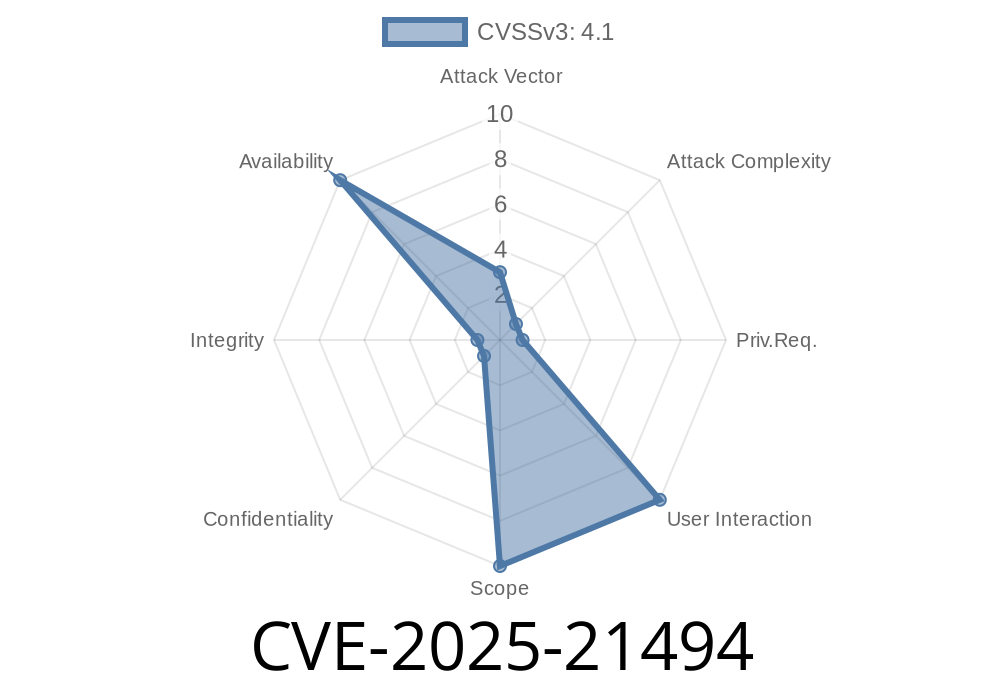A new vulnerability, identified as CVE-2025-21494, has been discovered in the MySQL Server product of Oracle MySQL. This vulnerability affects the server component, specifically in the area of security and privileges. The versions impacted by this vulnerability include 8..39 and prior, 8.4.2 and prior, and 9..1 and prior. In today's article, we'll delve into the details of this vulnerability, explore the potential consequences of a successful attack, and cover ways to mitigate this risk.
Overview
The CVE-2025-21494 vulnerability poses a challenge to exploit ; however, it allows a high-privileged attacker with access to the infrastructure where MySQL Server operates to potentially compromise the server. Successfully exploiting this vulnerability could lead to unauthorized abilities, which can cause a hang or frequently repeatable crash (complete DoS) of the MySQL Server. The CVSS 3.1 Base Score for this vulnerability is 4.1, focusing on availability impacts. The full CVSS vector can be found below:
CVSS:3.1/AV:L/AC:H/PR:H/UI:N/S:U/C:N/I:N/A:H
Exploit Details
An attacker who manages to successfully exploit the CVE-2025-21494 vulnerability can cause the MySQL server to either hang or crash repeatedly. To understand this exploit, let's first examine the nature of the affected server components: security and privileges.
MySQL Server incorporates various security and privilege protections in order to ensure that only authorized users can access data and perform specific actions. Such protections are critical to the integrity and availability of the data stored within the server.
The attacker's target is the infrastructure where the MySQL Server is running. By gaining access to this environment, the attacker can tamper with the server's internal processes and cause a DoS (Denial of Service) condition. This effectively renders the MySQL Server unusable, leading to a significant impact on availability.
Mitigation
To counteract the potential risks of CVE-2025-21494, system administrators are advised to take the following steps:
1. First and foremost, apply any available updates and patches from Oracle that address this vulnerability. Regularly review Oracle's security alerts and Advisories for MySQL Server at the following link:
Oracle Critical Patch Update Advisory
2. Implement strict network access controls to limit the number of users who can access the infrastructure hosting the MySQL server.
3. Continuously monitor and review user privileges to ensure that only necessary permissions are granted to appropriate users. Remove unnecessary privileges and ensure that principle of least privilege is implemented.
4. Regularly review and update system configurations, keeping in mind recommended security configurations and best practices.
5. Implement proper monitoring and intrusion detection measures to identify and mitigate potential threats early on.
Conclusion
The CVE-2025-21494 vulnerability discovered in MySQL Server is a difficult-to-exploit security risk; however, if attackers successfully execute an attack, the impacts on infrastructure and data availability could be severe. Maintaining robust security measures, applying timely updates, and employing rigorous access controls are critical to mitigating this vulnerability's potential fallout. Stay vigilant, and keep your servers secure.
Timeline
Published on: 01/21/2025 21:15:14 UTC
Last modified on: 01/23/2025 17:15:22 UTC
